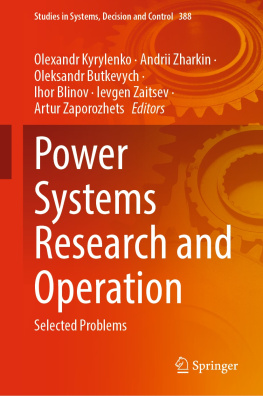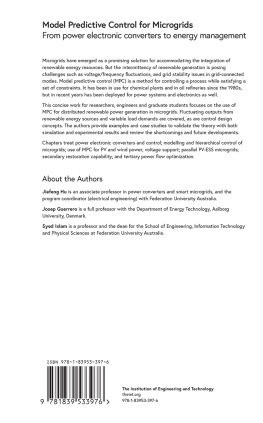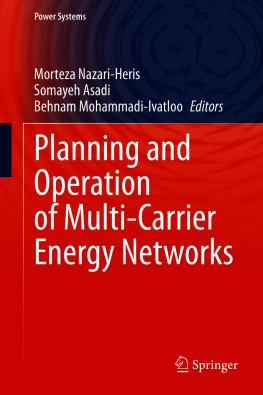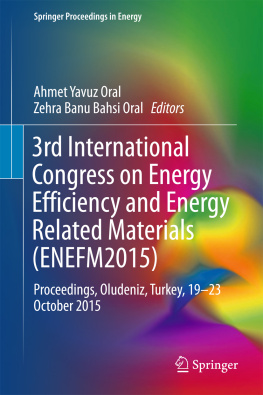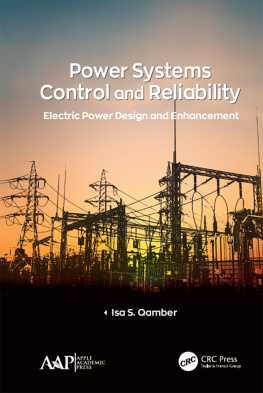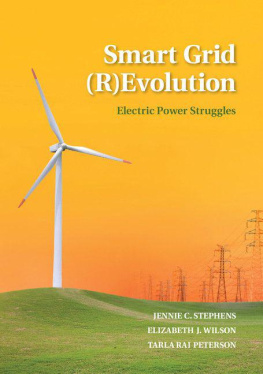This edition first published 2014
2014 John Wiley and Sons Ltd
Registered office
John Wiley & Sons Ltd, The Atrium, Southern Gate, Chichester, West Sussex, PO19 8SQ, United Kingdom
For details of our global editorial offices, for customer services and for information about how to apply for permission to reuse the copyright material in this book please see our website at www.wiley.com .
The right of the author to be identified as the author of this work has been asserted in accordance with the Copyright, Designs and Patents Act 1988.
All rights reserved. No part of this publication may be reproduced, stored in a retrieval system, or transmitted, in any form or by any means, electronic, mechanical, photocopying, recording or otherwise, except as permitted by the UK Copyright, Designs and Patents Act 1988, without the prior permission of the publisher.
Wiley also publishes its books in a variety of electronic formats. Some content that appears in print may not be available in electronic books.
Limit of Liability/Disclaimer of Warranty: While the publisher and author have used their best efforts in preparing this book, they make no representations or warranties with respect to the accuracy or completeness of the contents of this book and specifically disclaim any implied warranties of merchantability or fitness for a particular purpose. It is sold on the understanding that the publisher is not engaged in rendering professional services and neither the publisher nor the author shall be liable for damages arising here from. If professional advice or other expert assistance is required, the services of a competent professional should be sought.
Library of Congress Cataloging-in-Publication Data
Microgrid: architectures and control / edited by professor Nikos
Hatziargyriou.
1 online resource.
Includes bibliographical references and index.
Description based on print version record and CIP data provided by
publisher; resource not viewed.
ISBN 978-1-118-72064-6 (ePub) ISBN 978-1-118-72065-3 ISBN 978-1-118-72068-4 (cloth)
1. Smart power grids. 2. Small power production
facilities. I. Hatziargyriou, Nikos, editor of compilation.
TK3105
621.31dc23
2013025351
A catalogue record for this book is available from the British Library.
ISBN: 978-1-118-72068-4
Dedicated to the Muse of Creativity
Foreword
The idea of microgrids is not new. However, as new technologies are coming into existence to harvest renewable energy as well as more efficient electricity production methods coupled with the flexibility of power electronics; a new industry is developing to promote these technologies and organize them into microgrids for extracting the maximum benefits for owners and the power grid. More than 15 years ago, the Department of Energy has sponsored early research that laid the foundations for microgrids and explored the benefits. One key aspect is the ability and promise to address environmental concerns that have been growing in recent years. Today the microgrid concept has exploded to include a variety of architectures of energy resources into a coordinated energy entity that its value is much greater than the individual components. As a result the complexity of microgrids has increased. It is in this environment of evolution of microgrids that the present book is very welcome. It is written in a way that provides valuable information for specialist as well as non-specialists.
Chapter 1 provides a well thought view of the microgrid concept from the various forms of implementation to the potential economic, environmental and technical benefits. It identifies the role of microgrids in altering the distribution system as we know it today and at the same time elaborates on the formation of microgrids as an organized entity interfaced to distribution systems. In a refreshingly simple way identifies the enabling technologies for microgrids, that is power electronics, communications, renewable resources. It discusses in simple terms the ability of microgrids to minimize green house gases, help the power grid with load balancing and voltage control and assist power markets. While it is recognized that participation of the microgrids in power markets is limited by their size, it discusses possible ways that microgrids can market their assets via aggregators and opens the field for other innovations.
The book addresses two of the great challenges of microgrids: control and protection. Four chapters are devoted to these complex problems, three on control (Chapters 2, 3 and 5) and one on protection (Chapter 4). The multiplicity of control issues and their complexity is elaborated in a clear and concise manner. Since microgrids comprise many resources that are interfaced via power electronics, the book presents the organization of the control problems in a hierarchical architecture that consists of local controllers that control specific resources, their operation and their protection as well as outer loop controllers that perform load-generation management, islanding operation as well as the interaction with up-stream controllers including power system control centers. It provides a good overview of approaches as well as the role of state estimation in controlling and operating a microgrid. In addition to conventional control methods, recent intelligent control approaches are also discussed. The specific issues and challenges of microgrid control are clearly elaborated. As an example, because the microgrid typically comprises many inverters connecting various resources to the microgrid it is possible to trigger oscillations due to inverter control interactions. Methods for solving these issues are clearly discussed in an easy to follow way. It is recognized that multiple microgrids can exist in a system and the issue of controlling and coordinating all the microgrids is very important from the point of view of managing the microsources as well as providing services to the power grid by coordinating all the resources. The services can be any of the ancillary services that are typically provided by large systems: frequency control, voltage control, power balance, capacity reserves. The hierarchies involved in the control and operation of multi-microgrid systems is eloquently presented as a hierarchical control problem.
Protection of microgrids is a challenging problem due to the fact that microgrid resources provide limited fault currents. Detection of faults in microgrids is problematic at best because the grid side fault current contribution may be very high while the contribution from microsources is limited. Present protection schemes and functions are not reliable for microgrids. The book describes clever methods for providing adequate protection functions such as adaptive protection schemes, addition of components that will provide temporarily high fault currents to enable the operation of protective relays, increasing inverter capacity and therefore fault current contribution. While the book provides some solutions it also makes it clear that there is much more work that needs to be done to reliably protect microgrids.
The basic approaches in designing, controlling and protecting microgrids are nicely complimented by a long list of microgrid projects around the globe that provide a picture of the evolution of microgrid design and lessons learned. Specific microgrid projects in Europe, United States, Japan, China and Chile are described and discussed. These projects provide an amazing insight into the lessons learned, challenges faced and issues resolved and issues outstanding. The examples span small capacity microgrids as well as some very large microgrids; grid-connected microgrids as well as stand-alone or island microgrids. The information provided is extremely useful and enables appreciation of the challenges as well as the rewards of these systems.




